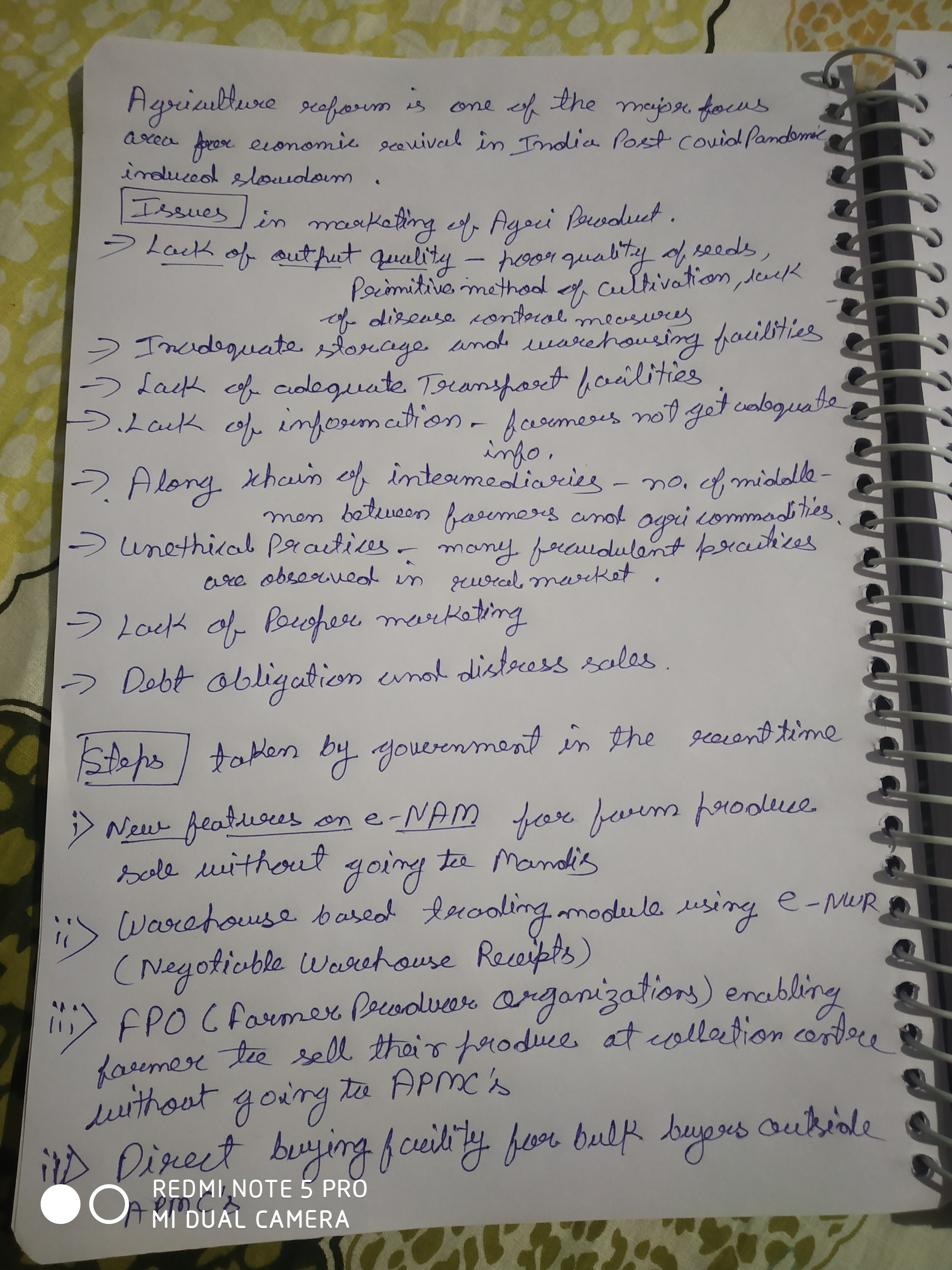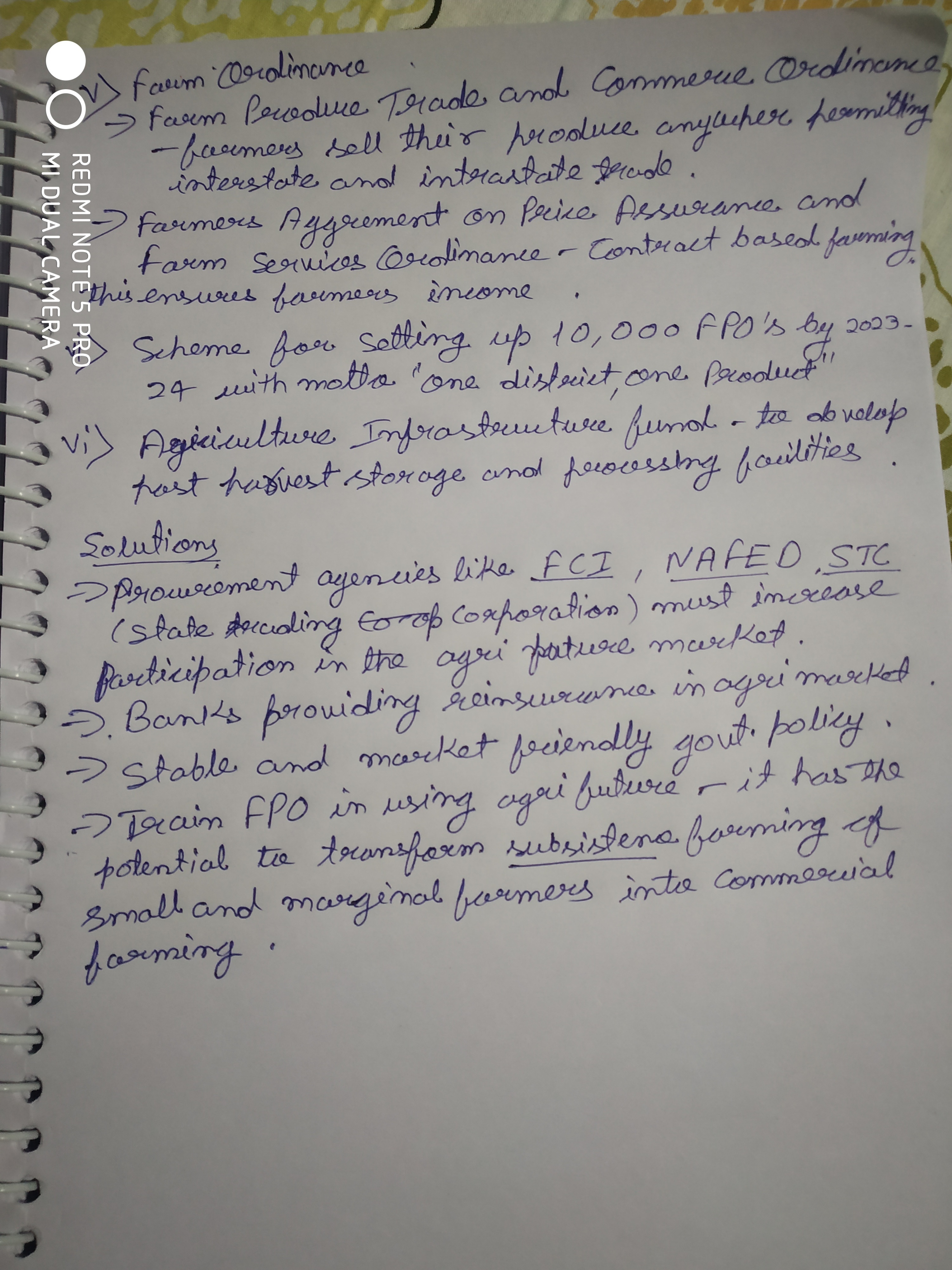Good evening dear reader.
Here is our 7pm editorial Summary for today
About 7 pm Editorial Summary – This initiative provides an in-depth analysis of the important news editorial of the day. Students don’t need to look anywhere more for their daily news analysis. We take the most important editorial of the day and provide its comprehensive summary.
For 7pm Editorial Archives Click HERE →
Addressing Agricultural Marketing Comprehensively
Introduction:
Government has announced 1 lakh crore AIF(Agriculture Infrastructure Fund) to develop post harvest storage and processing facilities.
- Concessional loans to FPOs(farmer producer Organizations) and individual entrepreneurs will be provided to develop warehouses, cold storages etc.
- NABARD will be the implementing agency
This is a part of broader reforms in agriculture marketing and supply chain to boost farmers incomes. Other steps include:
- 3 farm ordinances liberalizing Essential commodities Act(ECA); liberalizing agri products sale beyond APMCs and enabling contract farming
- Creation of 10000 FPOs scheme with NABARD as implementation agency
- e-NAM with warehouse based trading modules
- PM AASHA to ensure support prices
NABARD being the implementation agency of both AIF and 10000 new FPOs can bring convergence in these reforms. This will lead to increased profitability for FPOs and hence farmers.
Yet these reforms are not comprehensive. More steps are needed to address the supply chain comprehensively.
Capital requirements of small farmers:
Small farmers(85% of total farmers) cannot hold stocks as they have urgent capital requirements for family expenditure. Solution is a Negotiable Warehouse Receipt(NWR) system to be implemented at FPO level.
- Under NWR system, 75-80% of value of produce to be paid to farmers at current market prices
- This needs large working capital with FPOs. NABARD must provide concessional finance to FPOs with 4-7% interest rates to make NWR system economically viable. Currently micro finance institutions provide 18-22% interest rates which are unviable.
- NABARD must train FPOs in using the NWR system.
Deepening agri futures agricultural marketing :
Agri futures market hedges Agricultural Marketing risks to farmers by providing reliable prices and assured procurement. It is necessary to tackle price volatility as seen in commodities like onion.
Issues in agri markets include:
- In India’s NCDEX(commodities exchange), volume and value of agri commodities trading has reduced drastically from 2012 to 2019.
- Restrictive and unpredictable government policy. Any rise in agri prices is being responded with banning and restrictions of agri futures
- Lack of awareness of FPOs and farmers in utilizing these agri futures
Solutions for the same are:
- NABARD must train FPOs in using agri futures
- Procurement agencies like FCI(Food Corporation of India), NAFED, STC(State Trading Corporation), must increase participation in the agri futures market. This deepens the agri futures markets as is seen in China.
- Banks providing reinsurance in agri markets
- Stable and market friendly government policy.
Conclusion:
AIF, FPOs and farm ordinances will ensure spatial integration of Indian agri markets through one nation, one market. These will have to be complemented by reforms which ensure temporal integration through agri-spot and futures markets. Only then can we comprehensively address the supply chain and marketing inefficiencies in agriculture. This will ensure in realizing the vision of ‘Doubling Farmers Incomes by 2022’
Source: Indian Express
Mains question:
- Discuss the issues in marketing of agri products in India? What steps have the government taken in recent time to address these issues? What more steps are needed to make the supply chain efficient?[15 marks, 250 words]








